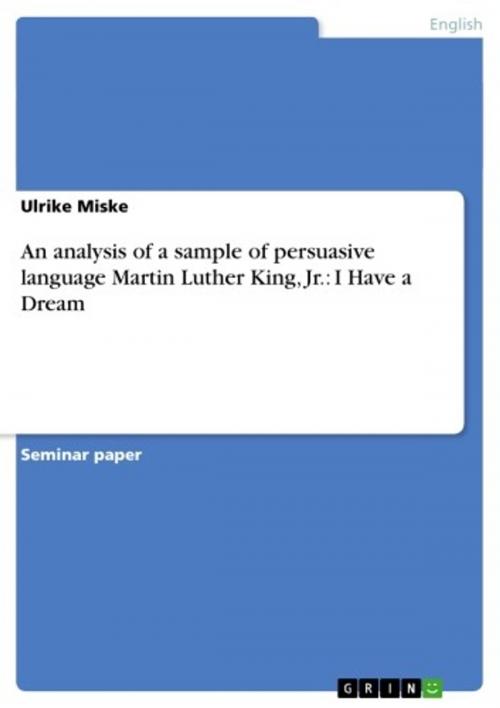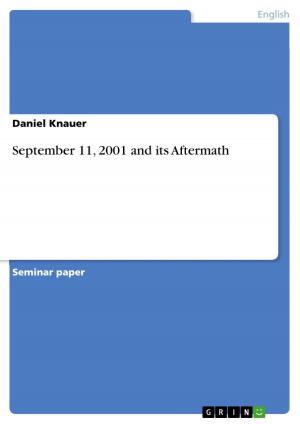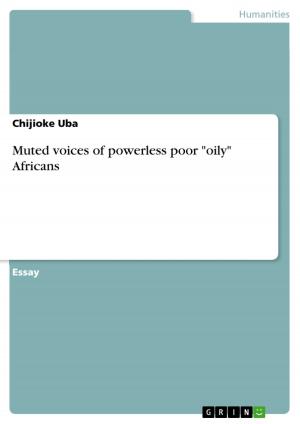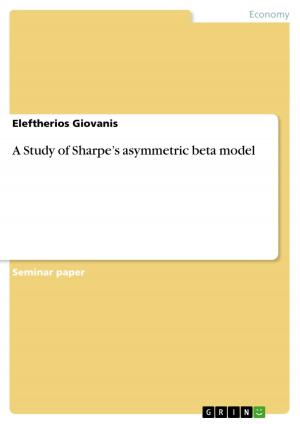An analysis of a sample of persuasive language Martin Luther King, Jr.: I Have a Dream
Nonfiction, Entertainment, Drama, Anthologies| Author: | Ulrike Miske | ISBN: | 9783640169412 |
| Publisher: | GRIN Publishing | Publication: | September 18, 2008 |
| Imprint: | GRIN Publishing | Language: | English |
| Author: | Ulrike Miske |
| ISBN: | 9783640169412 |
| Publisher: | GRIN Publishing |
| Publication: | September 18, 2008 |
| Imprint: | GRIN Publishing |
| Language: | English |
Seminar paper from the year 2006 in the subject English Language and Literature Studies - Linguistics, grade: 1,3, University of Birmingham, course: Semantics, 5 entries in the bibliography, language: English, abstract: The Civil Rights Movement in the United States of America between 1954 and 1968 aimed at abolishing public and private acts of racial discrimination against African Americans, especially in the southern states. In the course of the movement many sit-ins, freedom rides and several demonstrations were organised to show direct action. It was a time of mass mobilization, nonviolent resistance and civil disobedience of African American citizens. Backed up by local churches and grassroots organizations, the African Americans stood strong and united fighting for their cause. They wanted to bring about new acts that included racial dignity, economic and political self-sufficiency as well as freedom from white authority. One of the great leaders of the Civil Rights Movement was Martin Luther King, Jr., a baptist minister from Montgomery, Alabama. Travelling many million miles of the country, he organized protests and marches and spoke at demonstrations. Though Martin Luther King, Jr. had been arrested for his political actions many times, he always placed great emphasis on an organized, nonviolent protest against the racist system of southern segregation. Moreover, he wrote several books and articles on that matter. In 1964, King even recieved the Nobel Peace Prize for his leadership of the non-violent resistance to end segregation in the United States. One of the most important marches was the March on Washington D.C. on August 28, 1963. It was at the Lincoln Memorial where Martin Luther King, Jr. spoke to more than 200,000 people from around the United States. His address 'I have a dream' in which he is talking about an integrated and unified America was to go down in history as one of the greatest speeches of all times. Semantically, this is a very interesting piece of persuasive writing. It is King's amazing choice of words and his metaphorical style of writing that must have electrified the masses in Washington D.C. just as it does today's readership. Moreover, it is interesting to look at his logic and values.
Seminar paper from the year 2006 in the subject English Language and Literature Studies - Linguistics, grade: 1,3, University of Birmingham, course: Semantics, 5 entries in the bibliography, language: English, abstract: The Civil Rights Movement in the United States of America between 1954 and 1968 aimed at abolishing public and private acts of racial discrimination against African Americans, especially in the southern states. In the course of the movement many sit-ins, freedom rides and several demonstrations were organised to show direct action. It was a time of mass mobilization, nonviolent resistance and civil disobedience of African American citizens. Backed up by local churches and grassroots organizations, the African Americans stood strong and united fighting for their cause. They wanted to bring about new acts that included racial dignity, economic and political self-sufficiency as well as freedom from white authority. One of the great leaders of the Civil Rights Movement was Martin Luther King, Jr., a baptist minister from Montgomery, Alabama. Travelling many million miles of the country, he organized protests and marches and spoke at demonstrations. Though Martin Luther King, Jr. had been arrested for his political actions many times, he always placed great emphasis on an organized, nonviolent protest against the racist system of southern segregation. Moreover, he wrote several books and articles on that matter. In 1964, King even recieved the Nobel Peace Prize for his leadership of the non-violent resistance to end segregation in the United States. One of the most important marches was the March on Washington D.C. on August 28, 1963. It was at the Lincoln Memorial where Martin Luther King, Jr. spoke to more than 200,000 people from around the United States. His address 'I have a dream' in which he is talking about an integrated and unified America was to go down in history as one of the greatest speeches of all times. Semantically, this is a very interesting piece of persuasive writing. It is King's amazing choice of words and his metaphorical style of writing that must have electrified the masses in Washington D.C. just as it does today's readership. Moreover, it is interesting to look at his logic and values.















